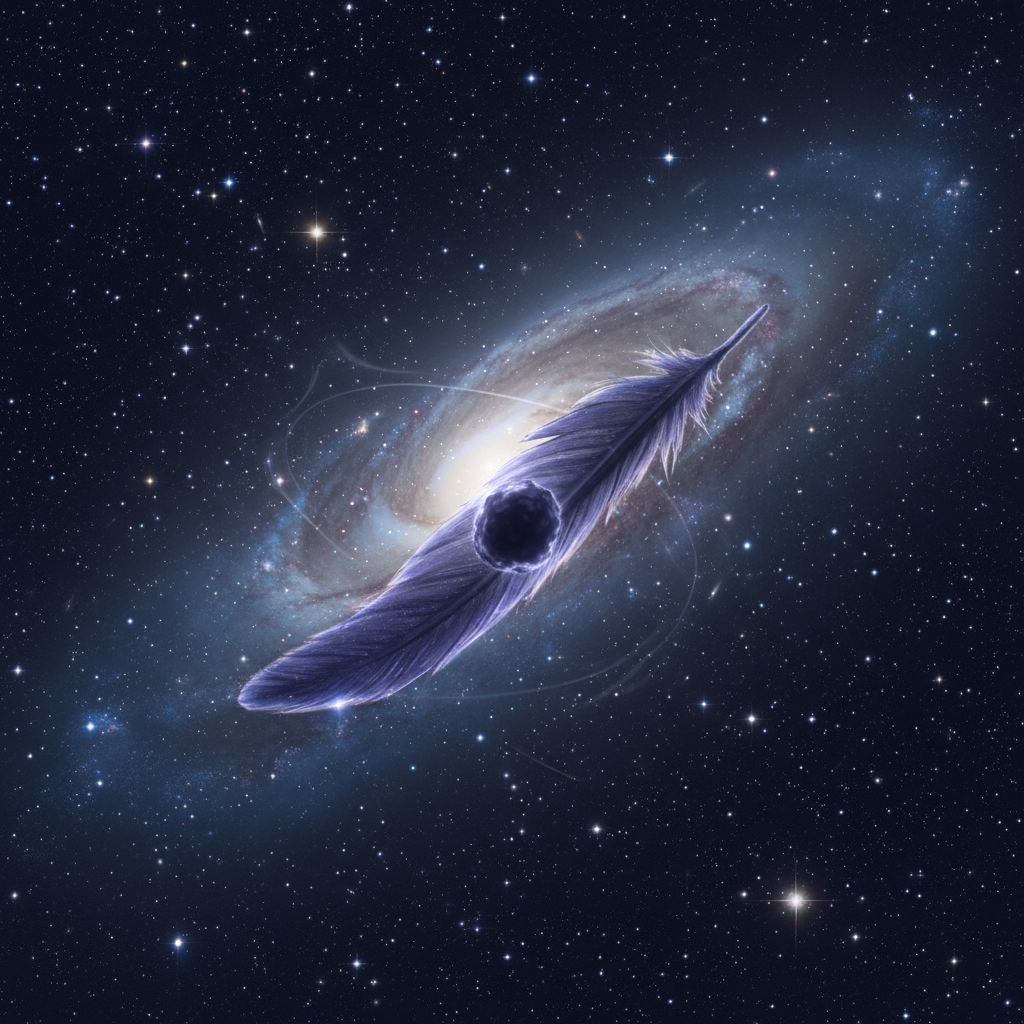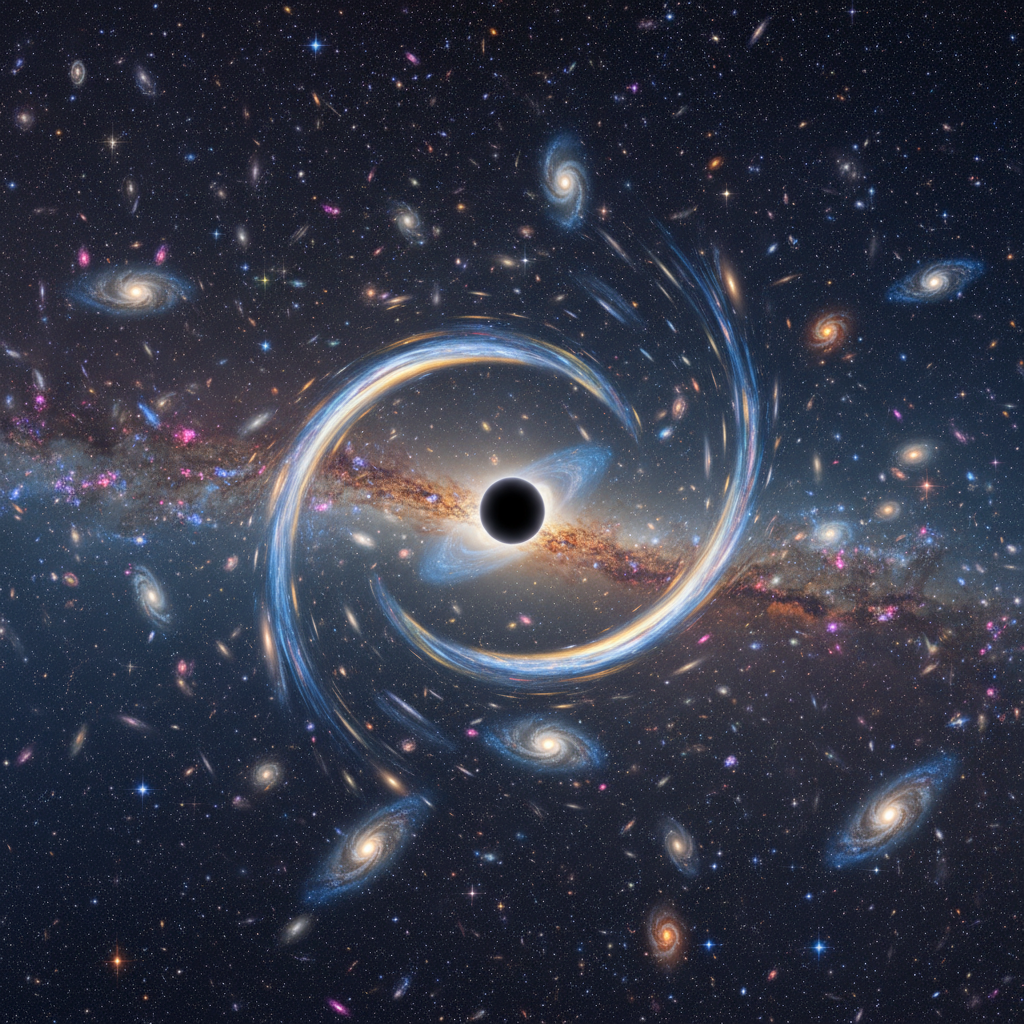Unveiling the Universe’s Featherweight Champion: A Mystery Dark Object Emerges

The cosmos is a tapestry woven with threads of light and shadow, vast nebulae, blazing stars, and swirling galaxies. Yet, an even greater portion of this grand design remains stubbornly hidden, a cosmic enigma we’ve dubbed “dark matter.” For decades, astronomers have grappled with its invisible influence, observing its gravitational fingerprints on the objects we can see. Now, a groundbreaking discovery has pulled back a sliver of that veil, revealing the lowest-mass dark object ever detected in the distant universe. This isn’t just another astronomical finding; it’s a tantalizing whisper from the cosmic wilderness, urging us to rethink our understanding of the universe’s most elusive components.
Imagine peering into the black of night, not with your eyes, but with a global network of sophisticated telescopes, each acting as a vital piece of a worldwide puzzle. This is precisely what an international team of astronomers has achieved, pushing the boundaries of what’s detectable and offering a rare glimpse into the universe’s hidden depths. This discovery isn’t merely about finding something “dark”; it’s about uncovering an object so subtle, so gravitationally delicate, that its very existence challenges our current models. What could this mysterious, featherweight cosmic entity be? The implications are as vast and intriguing as the universe itself.
Gravitational Lensing: Our Cosmic Magnifying Glass

How do you find something that doesn’t emit any light, doesn’t reflect any light, and is located in the distant universe? The answer lies in the elegant phenomenon of gravitational lensing. Einstein’s theory of general relativity predicted that massive objects warp the fabric of spacetime around them. This warping acts like a cosmic lens, bending the light from objects behind it.
In this particular case, astronomers observed a distant quasar – an extremely luminous active galactic nucleus – whose light was being subtly but definitively distorted. As the mysterious dark object passed between our telescopes and the quasar, its gravitational pull momentarily amplified and shifted the quasar’s light. It’s akin to watching a car’s headlights through a heat haze on a summer road; the background light appears to shimmer and distort as the denser, hotter air pockets move in front of it.
The key to this discovery wasn’t just observing a single lensing event, but precisely measuring a microlensing event. Microlensing occurs when a compact, unseen object passes in front of a more distant star or quasar, causing a temporary brightening of the background source. By meticulously analyzing the light curves – how the brightness of the quasar changed over time – the astronomers were able to deduce the mass of the intervening object. The precision required for such an observation is staggering, necessitating a global collaboration and an intricate understanding of cosmic dynamics.
The “Lowest-Mass Dark Object”: A Universe of Possibilities
The significance of detecting the “lowest-mass dark object yet found” cannot be overstated. When we talk about “dark objects,” we’re not just referring to objects that don’t emit light, like planets or brown dwarfs. We’re talking about something far more enigmatic. This object’s mass is incredibly small, lying in a range that poses a fascinating challenge to our existing astronomical classifications. Could it be a primordial black hole, one of the earliest and smallest black holes theorized to have formed directly from the collapse of matter in the early universe, before stars even existed?
Another tantalizing possibility is that this object represents a new class of dark matter particle. While the leading candidate for dark matter remains the WIMP (Weakly Interacting Massive Particle), current experiments have yet to directly detect it. The existence of a dark object with such a low mass could open doors to alternative dark matter theories, suggesting that dark matter might come in a wider spectrum of masses and forms than previously imagined. It forces us to broaden our search and consider scenarios beyond our current assumptions.
Could it even be something truly exotic, a relic from the very first moments of the Big Bang, a cosmic fossil preserving conditions from an era we can only theoretically model? The exact nature of this object remains a mystery, which is precisely what makes it so exciting. It’s a blank slate onto which we can project our wildest scientific theories, knowing that one of them might just be correct.
Beyond the Enigma: The Power of Global Collaboration
This groundbreaking discovery underscores the immense power of international scientific collaboration and cutting-edge observational techniques. The phrase “global network of telescopes” isn’t just a throwaway line; it represents years of planning, coordination, and technological advancements. By combining data from telescopes strategically positioned across the globe, astronomers can achieve a level of resolution and continuous monitoring that would be impossible with a single observatory.
This networked approach allows for triangulation, precise timing of events, and a more comprehensive understanding of transient phenomena like microlensing events. It’s a testament to the human spirit of inquiry, where scientists from diverse backgrounds and institutions come together, pooling their resources and expertise to answer some of the universe’s most profound questions. This discovery is a beacon, illuminating not only a mysterious object in the distant cosmos but also the path forward for future astronomical endeavors, relying on even more sophisticated and interconnected observatories.
A Universe Full of Questions
The detection of this lowest-mass dark object is more than just a new entry in the cosmic catalog; it’s a profound statement about the limits of our current understanding. It’s a beacon in the darkness, hinting at a universe far more complex and filled with subtle wonders than we previously imagined. This mystery object doesn’t provide all the answers, but it certainly sparks a torrent of new questions: What else is lurking out there, just beyond the reach of our current instruments?
Will future observations refine our understanding of this particular object, perhaps even leading to its definitive classification? And what impact will its existence have on our cosmological models, particularly those concerning dark matter and the formation of the early universe? This discovery reminds us that the universe is far from fully explored, and with every new technological leap and every collaborative effort, we edge closer to unraveling its most profound secrets. The pursuit of understanding the cosmos is a never-ending journey, and this latest finding is a thrilling step into the unknown.

